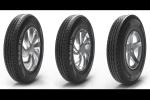Equipped with the world’s first triple-camera system, the P20 Pro not only brings to consumers a whole new perspective, but also leads the trend of smartphone photography, completely surpassing any and all expectations that the global consumers have for smartphones.
Compared to other modern smartphones, P20 Pro’s most outstanding feature has to be its groundbreaking triple camera setup.
Huawei has been collaborating with Leica for a few years.
The collaboration is renowned for its series of smartphones, which are equipped with dual Leica cameras as well as leading photography capabilities.
Huawei has joined hands with Leica once again to put three VARIO-SUMMILUX lenses into its latest flagship.
The P20 Pro is equipped with a massive 1/1.7-inch 40 MP RGB sensor module that is paired with a 27 mm f/1.8 lens for faithful recreation of fine details; a 20 MP monochrome sensor module that is paired with a 27 mm f/1.6 lens for shots that evoke classical charm; and the industry’s first 8 MP sensor with long zoom lens that enable the device to support 3x optical zoom and 5xhybrid zoom.
So far, Huawei P20Pro has the industry’s largest CMOS image sensor (1/1.7 inch) to date.
The sensor allows for more detailed images as well as a virtual bokeh effect, which is rarely offered in today’s mainstream devices.
Since the image sensor is so large, it can accommodate larger individual pixels.
A single pixel on the image sensor of the P20 Pro is already a massive 1.55μm exceeding other flagship devices.
The large size of the pixels allows them to capture more light, resulting in high ISO, which leads to a high signal-to-noise ratio.
In the P20 Pro, a sophisticated pixel fusion technology enables the 40 MP image signals to be super sampled into an output with a 10 MP resolution.
This method results in images that carry a pixel size of 2 μm with all the benefits of the industry-leading light sensitivity and wider dynamic range.
The HUAWEI P20 Pro supports an ISO rating of up to 102400 in extremely low-light situation, which is not only unique in the mobile space, but so far such sophistication is only seen in top-end modes in digital cameras.
The extraordinary sensitivity enables the P20 Pro to shoot clear photos in extreme low-light environments—those where even the human eyes have a problem seeing clearly in.
In order to achieve high compatibility and high performance when shooting in backlight, Huawei has not only equipped the P20 Pro with highly photosensitive, large image sensors to improve the light sensitivity down to the substrate layer, it has also developed an all-new solution to realize multi-frame RAW noise reduction, enabling HDR photographs to attain a never-before-seen level of clarity.
Contrary to previous implementations, when shooting HDR photos, the P20 Pro starts the HDR photo compilation with its ISP using RAW files.
In other words, HUAWEI P20’s HDR mode dodges and burns the images before writing the files into memory.
From the backlit image below, you can clearly see how this process results in vastly superior outcomes compared to those by other models in the market.
The P20 Series apply the brand-new technology named AIS (AI Image Stabilization) allowing users to shoot superb shoot by carrying out continuous exposure for up to 6 seconds whilst still only being held in the hand.
It uses AI technology to analyze, sort out features from each image, recognize shapes and edges of objects and at the end automatically captures images with a four-second exposure time.
With AI algorithms, Master AI filters and corrects handshakes that cause tilted or blurry images; builds super imposed images and balances each element of photography to obtain a perfect shot.
This undoubtedly revolutionizes photography.
Whether it's the silent wilderness or a hustling market, you can take sharp images with HUAWEIP20 series.
With the support of powerful hardware and processing processes, the results from the new portrait mode is truly refreshing—regardless if the user is shooting a backlit photo or working in a low light environment, the photo are all absolutely gorgeous.
The new P20 Pro is able to choose the best camera settings for every scene and combine the image data of three image sensors with a computing algorithm—which means that it can beat the rival phones in almost every way and top the photo and video rankings.
Its zoom and bokeh effects are outstanding at low-light situations, which are head and shoulders above its competitors.
If you are looking for a smartphone with the best cameras, there’s no reason to hold yourself back from buying a P20 device.



























